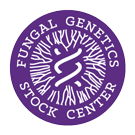Strain: Neurospora crassa
FGSC #1204
Reporting Genes: al-1;pe
Species: crassa
Allele: 34508;Y8743m
Alternate Strain Number: 9127
Depositor: DDP
Linkage Group: IR;IIR
Mating Type: a
Opposite Mating Type: 1203
Genes

Reporting Genes: al-1;pe
Species: crassa
Allele: 34508;Y8743m
Alternate Strain Number: 9127
Depositor: DDP
Linkage Group: IR;IIR
Mating Type: a
Opposite Mating Type: 1203
